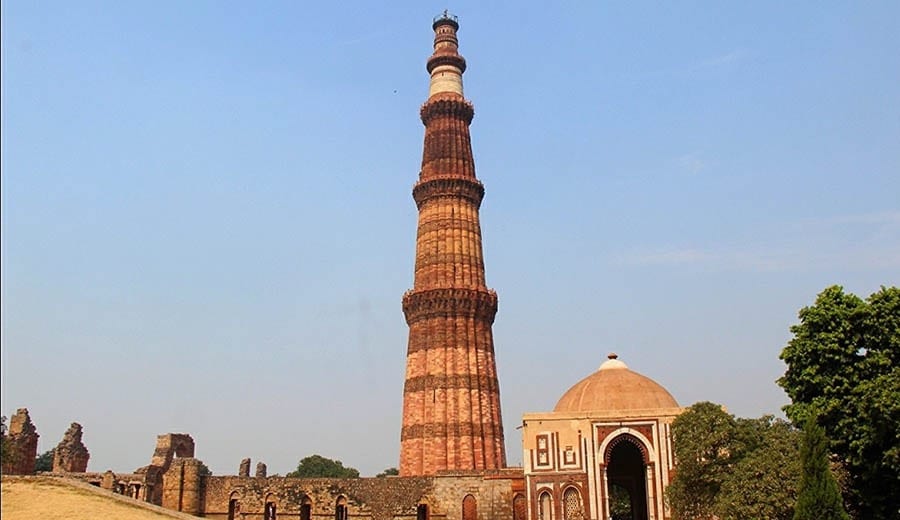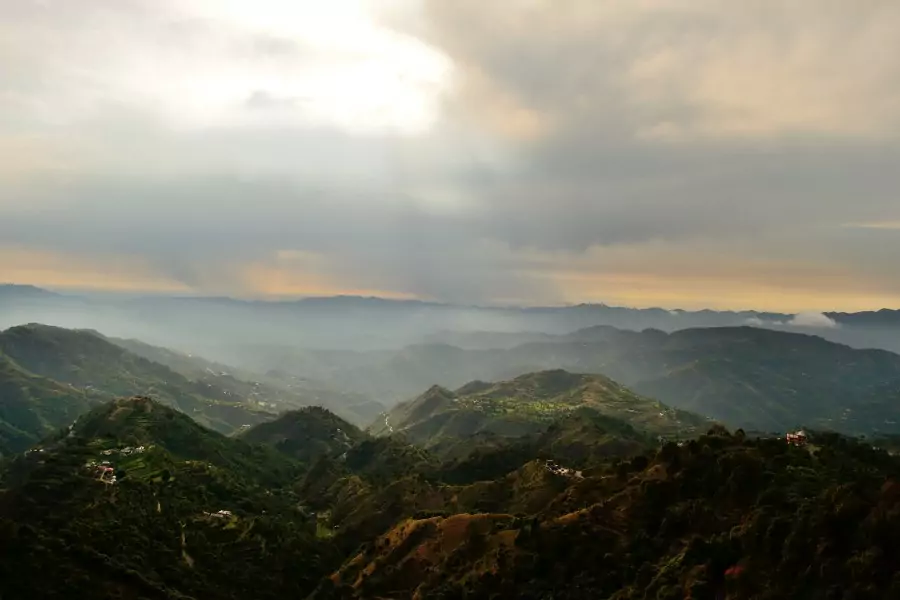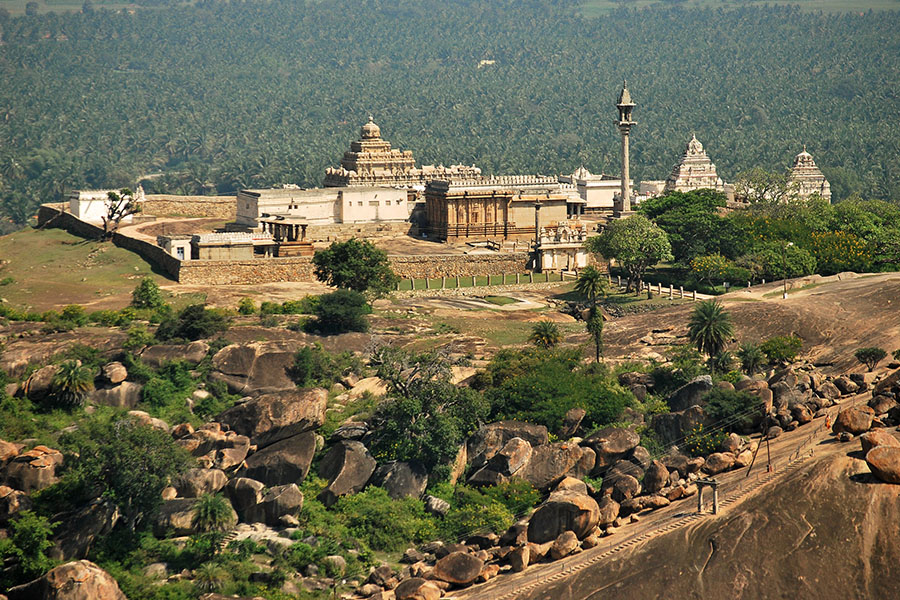Qutub Minar Delhi
Qutub Minar is a minaret that forms part of the Qutb complex, a UNESCO World Heritage Site in Delhi, India. It is the tallest minar in India and is made of red sandstone and marble. The minar is 239.5 feet tall, and was built in the early 13th century by Qutb al-Din Aibak, the first Muslim ruler of Delhi. The minar has five stories, and each story is marked by a projecting balcony. The walls of the minar are adorned with intricate carvings and inscriptions, and the tower is capped by a pointed dome. The Qutb complex also includes the Quwwat-ul-Islam Mosque, the Alai Darwaza gate, and the Tomb of Iltutmish.
History of Qutub Minar
The Qutub Minar was built in the early 13th century by Qutb al-Din Aibak, the first Muslim ruler of Delhi. It was originally intended to serve as a victory tower and a minaret for the Quwwat-ul-Islam Mosque, which was built on the site of a Hindu temple. The minar was later completed by Qutb al-Din Aibak’s successor, Iltutmish.
Over the centuries, the Qutub Minar has undergone several renovations and additions. In 1368, the minar was damaged by lightning and was repaired by Firoz Shah Tughlaq, who added another story to the tower. In 1505, an earthquake damaged the top two stories of the minar, and they were subsequently rebuilt by Sikandar Lodi. The minar was further repaired and renovated by later Mughal rulers, including Shah Jahan and Aurangzeb.
The Qutub Minar is now a popular tourist attraction and a major landmark in Delhi. It is also an important historical and cultural site, and is protected by the Archaeological Survey of India.
About Qutub Complex
The Qutb complex is a group of monuments and buildings located in Delhi, India. It includes the Quwwat-ul-Islam Mosque, the Qutub Minar, the Alai Darwaza gate, and the Tomb of Iltutmish. The complex was built by the Delhi Sultanate, a Muslim dynasty that ruled in India from the 13th to the 16th centuries.
The Quwwat-ul-Islam Mosque is the oldest mosque in India, and was built by Qutb al-Din Aibak in the early 13th century. The mosque is made of red sandstone and marble, and is adorned with intricate carvings and inscriptions. The Qutub Minar is a towering minaret that was also built by Qutb al-Din Aibak. It is the tallest minar in India, and has five stories adorned with carvings and inscriptions.
The Alai Darwaza is a gate that was built by Alauddin Khilji in the 14th century. It is made of red sandstone and marble, and is decorated with intricate carvings and inscriptions. The Tomb of Iltutmish is the tomb of the Delhi Sultan Iltutmish, who ruled from 1211 to 1236. It is made of red sandstone and marble, and is decorated with carvings and inscriptions.
The Qutb complex is now a UNESCO World Heritage Site, and is a popular tourist attraction in Delhi. It is also an important historical and cultural site, and is protected by the Archaeological Survey of India.
Architecture
The Qutb complex is an example of Indo-Islamic architecture, which combines elements of Indian and Islamic architectural styles. The buildings in the complex are made of red sandstone and marble, and are adorned with intricate carvings and inscriptions.
The Quwwat-ul-Islam Mosque is a large mosque with a rectangular plan. It has a central courtyard surrounded by arched galleries, and is topped by a series of domes. The mosque is decorated with carvings and inscriptions, and has four minarets at the corners of the courtyard.
The Qutub Minar is a tall, slender tower that is made of red sandstone and marble. It has five stories, and each story is marked by a projecting balcony. The walls of the minar are adorned with carvings and inscriptions, and the tower is capped by a pointed dome.
The Alai Darwaza is a large gate that is made of red sandstone and marble. It has a pointed arch and is decorated with carvings and inscriptions. The Tomb of Iltutmish is a square tomb with a dome. It is made of red sandstone and marble, and is decorated with carvings and inscriptions.
Overall, the Qutb complex is a beautiful example of Indo-Islamic architecture, with its combination of Indian and Islamic styles, and its intricate carvings and inscriptions.
Timings and Entry Fee
The Qutb complex is open to visitors every day of the week. The visiting hours are from sunrise to sunset. The entry fee for Indians is INR 30, and the entry fee for foreign tourists is INR 500. Children under the age of 15 are allowed to enter the complex for free. There may be additional charges for photography and videography.
It is recommended to check the official website of the Archaeological Survey of India or to contact the site directly for the most up-to-date information on timings and entry fees.
How to reach Qutub Minar
The Qutb complex is located in the Mehrauli area of Delhi, India. It is easily accessible by various modes of transportation. Here are some options for reaching the complex:
By metro: The nearest metro station is Qutub Minar on the Yellow Line. From the metro station, the complex is about a 10-minute walk away.
By bus: There are several DTC (Delhi Transport Corporation) buses that stop near the complex. You can also take an auto-rickshaw or a taxi from any part of the city to reach the complex.
By car: If you are driving to the complex, you can park your car at the designated parking area near the entrance.
Nearby Attractions
The Qutb complex is located in the Mehrauli area of Delhi, which is home to several other attractions that you may be interested in visiting. Here are some nearby attractions that you may want to consider:
- Gurudwara Bangla Sahib: This is a famous Sikh temple located in central Delhi. It is known for its golden dome and its langar (community kitchen) that serves free meals to all visitors.
- Humayun’s Tomb: This is a UNESCO World Heritage Site that is located just a few kilometers from the Qutb complex. It is the tomb of the Mughal Emperor Humayun and is an important example of Mughal architecture.
- Hauz Khas Village: This is a trendy neighborhood in South Delhi that is known for its shopping, dining, and nightlife. It is also home to the Hauz Khas Fort and the Hauz Khas Complex, which are worth a visit.
- India Gate: This is a war memorial located in the heart of Delhi. It is a popular spot for picnics, evening walks, and sightseeing.
- Swaminarayan Akshardham: This is a Hindu temple complex located in East Delhi. It is known for its grand architecture, cultural exhibitions, and gardens.
I hope this list gives you some ideas for things to see and do in the area.



